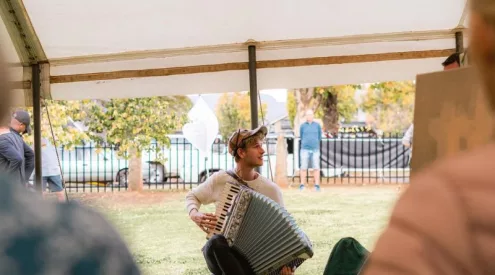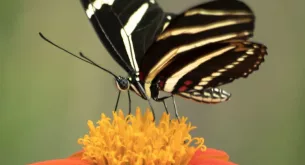Tourists who meet Zimbabwe’s Presidential Elephants leave with new-found friends. Later, emails often take wing over land and sea, asking after the likes of Lady and Lesley, Whole and Whosit, Misty and Mertle, Anya and Adele … an unforgettable wild elephant (who happens to have a name), who touched a heart. There’s no doubt there are favourites; those exceptionally friendly Hwange Estate giants who can always be counted on to respond to human presence with enthusiasm and affection.
What’s also particularly rewarding for me is following the lives of those snared elephants that were once immobilised and saved – like Victory and Loopy and Gwyneth. And just as satisfying is meeting up with those who miraculously defied death without our intervention.
Imagine yourself out on a Hwange Estate game drive. Everything around you is wild and free; you’re the one confined, albeit in an open-air vehicle. This is invigorating, soul-soothing land. Land of the feathered and the leathered. Unconsciously, you close your eyes and breathe deeply. The sounds and the smells are vivid, wild and unmistakeable. There’s fat zebras to your right and lanky giraffe just ahead, a pair of bateleur eagles soaring the thermals high above you. A family of adorable warthogs take fright when lumbering elephants get too near. With indepth knowledge of the elephant families, there’s no problem with us driving right in amongst these noble creatures.
Perhaps we’d be lucky enough to encounter both the ‘L’ family and the ‘P’ family, and then I’d tell you the story of three special family members – Lee, Limp and Pookie. Just three of many more elephants, all with similar stories. Amongst a large herd, you’re unlikely to even notice them. Yet they know something of pain and fear.
It’s satisfying, and important I think, to know and understand the reality of the places you visit – as well as basking in all of the endless splendour.
(Scroll through the photographs of these elephants as you read on.)
Lee is an 8-year-old male, the end of his trunk missing. He now skilfully uses his foot to kick an acacia pod onto the curvature of his trunk before scooping the pod up into his mouth; no longer able to pick anything up with the ‘fingers’ that should be at the trunk’s tip. Cousin Limp is a 10-year-old male; look closely and you’ll notice a scar circling his front left leg. He walks with a slight limp. Pookie is a 9-year-old female, her left ear a memory of her past misery, yet her spirit remains unbroken. All three elephants are playful, friendly and full of life. And all three are wire-snare victims; as ‘lucky’ as any snare victims can be.
Pookie was a new-born when I first met her and her mother, Paula, in 2001. It was a time of dreams and discoveries – only a few months into my work with the Presidential Elephants. I will never forget the sight of Pookie, just a couple of months later, with a wire wrapped tightly around her neck; her ear torn; the disgusting knot of wire on top of her head. They were early days and I was not yet familiar with the tragedies and the suffering. We were also not yet confident enough to attempt immobilising elephants within family groups. Pookie was the young elephant who convinced me that we must try. Miraculously, her snare came off without our intervention, before a darting attempt was organised.
The ‘L’ family, headed by the grand matriarch named Lady, was already one of my favourite families by late-2001, and so the sight of 2-year-old Limp in 2002 with a horrific leg snare left me distraught. I arranged for a darting, but incredibly the wire had broken off without our intervention during the previous night. Small amounts of antibiotics were administered instead. Limp had a terrible time of it, regardless. For literally years afterwards his burst left leg bothered him, flaring up every few months. During these trying times his mother, Louise, paid extra special attention to him.
And then there’s Lee, who lost his mother, Leanne, in 2007 (probably to gunfire). Just seven months later, in early 2008, Lee – then 6-years-old – suffered again, when the end of his trunk was ripped off in a snare.
All three defied death. All three are faring well today, although Lee has been hardest hit. He manages admirably with his shortened trunk, ‘lucky’ that he didn’t lose more length. It was the death of his mother that had a greater impact on his life. At 6-years-old he started wandering alone; something male elephants don’t typically do until they’re several years older. (Limp, for example, currently 10-years-old, has never yet left the comfort and support of his family.) Now at 8-years-old Lee has already left his family for good, having missed out on years of nurturing from his mother.
Elephants are resilient, intelligent beings. The human-inflicted suffering some endure is unimaginable. But we must acknowledge that it happens. And try our best to highlight and fix the problems. Non-commercial anti-poaching/snare-destruction teams patrol on foot. I find myself driving for hours every day monitoring the families, checking on water supplies and scouting for poachers and signs of other suspicious activities. Much goes on behind the scenes, in every African country, to try to keep the wildlife safe and well – for the animals’ wellbeing of course, but also so that tourists can take pleasure in them.
Tourism dollars (in addition to wildlife conservation funding) are crucial to the preservation of Zimbabwe’s wildlife. So do come and visit us soon! And enjoy an enlightened stay.
There are no doubt many, many wild elephants across Africa just like Pookie, Limp and Lee. You’ll see them, if you choose to be observant. It’s easy though, to pay no heed to them, or to their plight, especially if nobody knows their story. But these three elephants have names. You know them now. Now, they’re more difficult to forget.

















